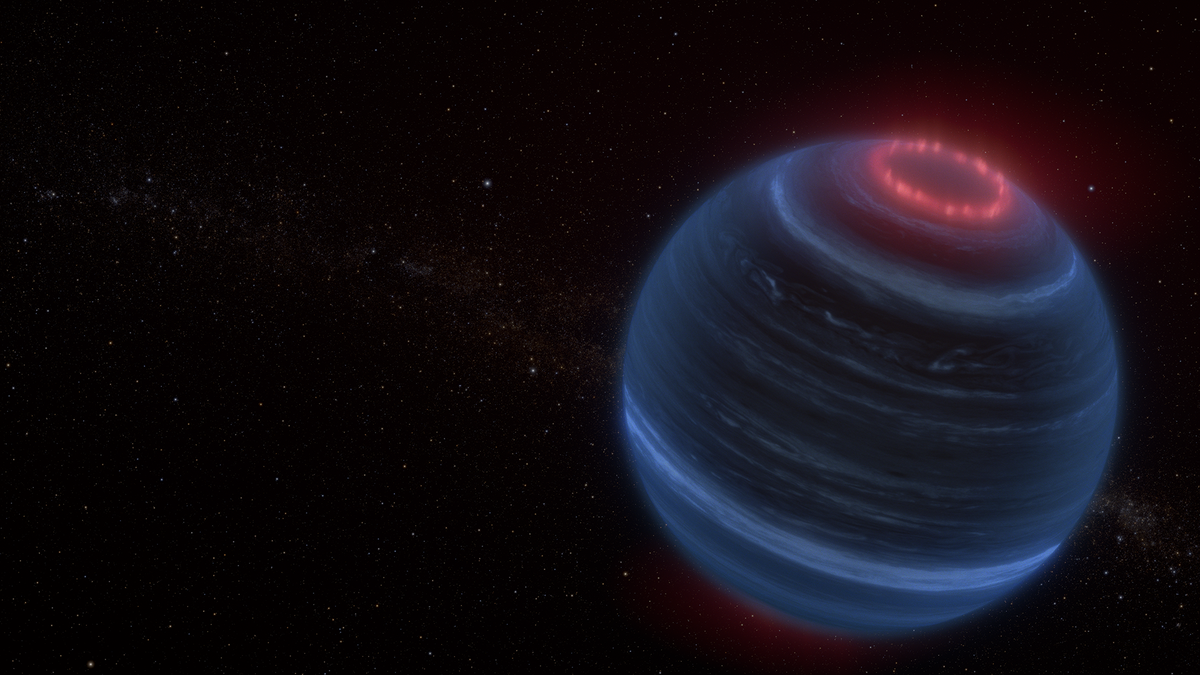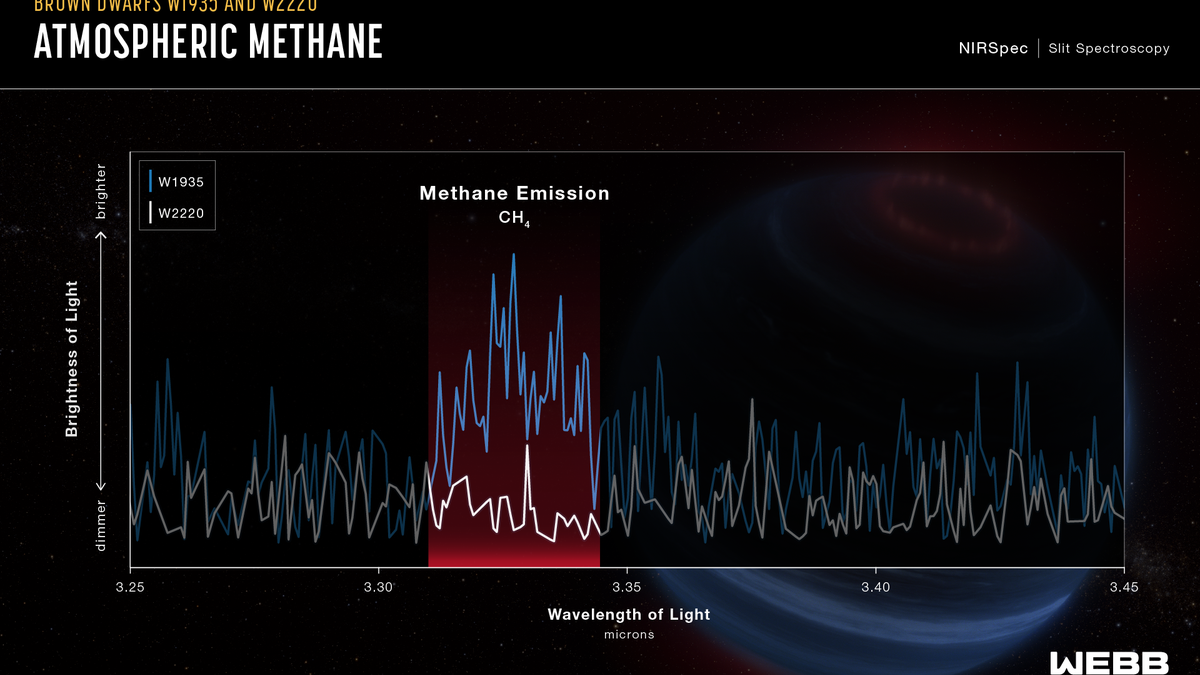How astronauts on the ISS are tackling the latest ‘unexpected challenges’
Coolant leaks, space debris collisions and unplanned engine thrusts are just some of the unexpected challenges astronauts aboard the International Space Station must overcome.
Astronomers witnessed mysterious light around a failed star in an unexpected celestial discovery using NASA’s James Webb Space Telescope.
A group of astronomers witnessed infrared emissions from methane surrounding a brown dwarf, likely due to energy in its upper atmosphere and indicating it as an aurora akin to Earth's northern and southern lights, NASA announced Tuesday. But the problem is that there's no clear source for that energy.
"We expected to see methane because methane is all over these brown dwarfs," said Jackie Faherty, an astronomer at the American Museum of Natural History in New York who was awarded time to investigate 12 brown dwarfs using the JWST. "But instead of absorbing light, we saw just the opposite: The methane was glowing. My first thought was, what the heck? Why is methane emission coming out of this object?"

Astronomers found infrared emissions from methane coming from brown dwarf W1935 using the James Webb Space Telescope. This artist concept portrays W1935, which is located 47 light-years from Earth. (NASA, ESA, CSA, Leah Hustak (STScI))
HOW NASA JUST MADE HISTORY USING A CAT VIDEO
Brown dwarfs are commonly known as failed stars since they have greater masses than even large planets like Jupiter, but still aren't large enough to create the nuclear fusion that powers stars, according to NASA.
The one Faherty's team recently discovered, named W1935, isn't near any apparent heat sources like stars, meaning it remains cold. They also found another brown dwarf that was nearly identical in composition and shared other significant features. Energy in that brown dwarf's atmosphere cooled with increasing altitude — as the astronomers expected.
But W1935, which is 47 light-years from Earth, for some reason warmed at higher altitudes, baffling Faherty's team.

A team of astronomers used NASA’s James Webb Space Telescope to study 12 cold brown dwarfs, finding that two — W1935 and W2220 — appear to be near twins of each other in composition. But W1935 shows emissions from methane. (NASA, ESA, CSA, Leah Hustak (STScI))
INTERNATIONAL SPACE STATION ASTRONAUTS REDEFINE ‘THE RIGHT STUFF’ FOR THE MODERN ERA
"This temperature inversion is really puzzling," Ben Burningham, a lead modeler of the brown dwarfs' computer model study, said. "We have seen this kind of phenomenon in planets with a nearby star that can heat the stratosphere, but seeing it in an object with no obvious external heat source is wild."
The astronomers looked at Jupiter and Saturn, which have aurorae of their own, for clues. They concluded that internal processes like those found on Jupiter and Saturn could be a heat source for W1935. Interstellar plasma or particles from a nearby active moon are alternative theories.

The northern lights, or aurora borealis, illuminate Denmark's skies in February 2023. (MADS CLAUS RASMUSSEN/Ritzau Scanpix/AFP via Getty Images)
NASA LAUNCHES MISSION TO CATCH ‘GOD OF CHAOS’ ASTEROID BEFORE IT SCRATCHES EARTH'S ORBIT
Aurorae, like the northern and southern lights, occur when a charged particle collision releases a flash of light and heat in Earth's upper atmosphere, according to NASA. Astronomers have previously detected radio emissions from warmer brown dwarfs and predicted auroral activity as the most likely explanation, but W1935 is the first and coldest auroral candidate outside the solar system with the signature of methane emission, NASA said.
"With W1935, we now have a spectacular extension of a solar system phenomenon without any stellar irradiation to help in the explanation," Faherty said.

Arianespace's Ariane 5 rocket with NASA's James Webb Space Telescope aboard launches in December 2021. It took six months for the device to become fully operational. (Getty Images)
The JWST launched in December 2021, but took another six months to become fully operational and start showing glimpses into the vast universe. The $10 billion device has allowed astronomers, like Faherty and her team, to see "exquisite detail" of celestial objects as shown in the investigation of the brown dwarfs, NASA said.
CLICK HERE TO GET THE FOX NEWS APP
"With Webb, we can really open the hood on the chemistry and unpack how similar or different the auroral process may be beyond our solar system," Faherty said.
Click here to see more JWST images.


